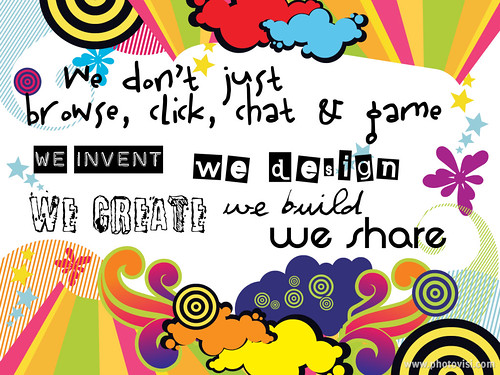"Learning is a change in the individual, due to the interaction of that individual, and his environment, which fills a need and makes him more capable of dealing adequately with his enviroment." (Burton, 1963)
Defining the concept of learning might prove quite a challenging task, since it can be used to describe a product, a process, or a function. However, there seems to be a general agreement among scholars that learning is intrinsically connected to change in the individual as a result of experience.
It is widely accepted that learning should be focused on the learners in order to meet and best respond to their needs. Therefore, instructional design processes as well as the learning strategies used will depend on the learners’ profile.
Before proceeding, let us analyse two terms which are key in education: pedagogy and andragogy. Both terms are of Greek origin - the first makes literal reference to “guiding a child” whereas the latter means “guiding a man”, therefore pinpointing significant differences in the teaching approaches which cannot be ignored.
Adult learners tend to be self-motivated and self-directed since they experience needs that require being satisfied; this, consequently, brings their being highly responsible for their own learning. In connection with this, their learning is life-oriented as they draw from prior life experience, which greatly contributes to their learning process. To sum up, adult learners are more goal-oriented than younger learners, for that reason they require more meaningful learning experiences based on life experience rather than on content.
On the other hand, adult learning is also characterised by some constraints and circumstances which should be accounted for, such as time restraint, ICT competence, lack of self-esteem, prior experience in education, etc.
All in all, andragogy defends that adults learn differently from children and attempts at paying particular attention to the former’s needs. In this regard, blended learning means a good opportunity for adult learners since it adapts to their conditions suiting their needs.
The seminar “Introduction to Blended Learning in Adult Education”, carried out at CFPI from October to December 2017, was designed following this line of thinking and intended for teachers of English at EOI (Official School of Languages). In the seminar, teachers have shared reflections on the subject as well as resources and proposals to implement in their teaching practice. The blog created as a portfolio of the seminar illustrates all the steps taken besides gathering all the suggestions shared by the participants.
| Etiquetas: | blended learning innovación |

Imagen de Denis Krebbs
Definir el blended learning como enseñanza semi-presencial es quedarse apenas con la punta del iceberg de lo que este planteamiento supone. Se trata de una enseñanza combinada en la que entran en juego diferentes factores: combina la enseñanza presencial con la formación online, incluye las TIC como un instrumento cotidiano en el proceso de enseñanza-aprendizaje y adopta nuevos enfoques metodológicos más acordes con la nueva realidad social, como es el caso del enfoque por proyectos.
El blended learning supone un avance con respecto al e-learning, ya que conjuga todos los aspectos positivos de la enseñanza presencia y no presencial, además de acomodarse a los diferentes estilos y ritmos de aprendizaje del alumnado que va dirigido, potencia el trabajo colaborativo y cooperativo entre los diferentes estilos y ritmos de aprendizaje del alumnado al que va dirigido, potencia el trabajo colaborativo entre los diferentes agentes implicados, permitiendo crear una comunidad de aprendizaje eficaz y eficiente, en clara consonancia con las habilidades profesionales demandadas en el ámbito europeo.
Dentro del ámbito de los idiomas, el blended learning posibilita:
Con este tipo de iniciativa se está contribuyendo no sólo al desarrollo de la competencia lingüística, sino de la competencia digital, de comunicación e interrelación multicultural, tan necesaria en la realidad europea en la que estamos circunscritos.
Para saber más:
| Etiquetas: | blended learning innovación |